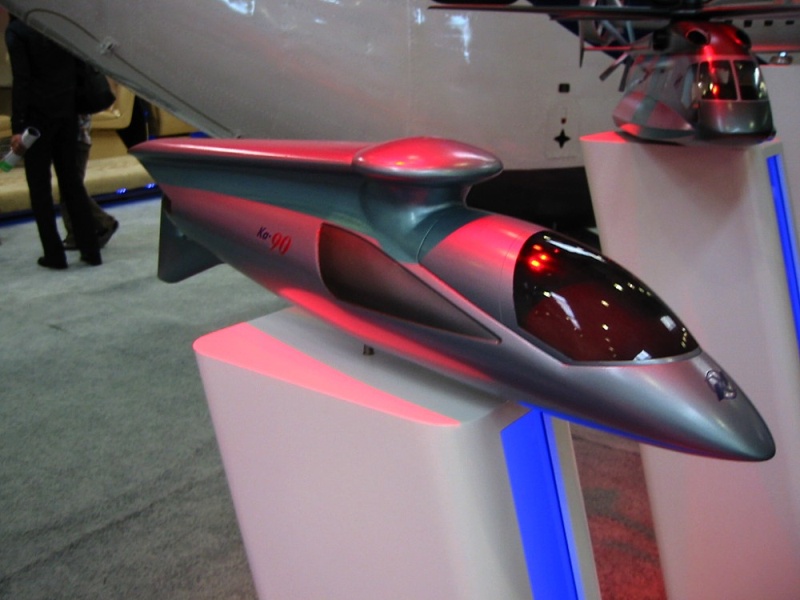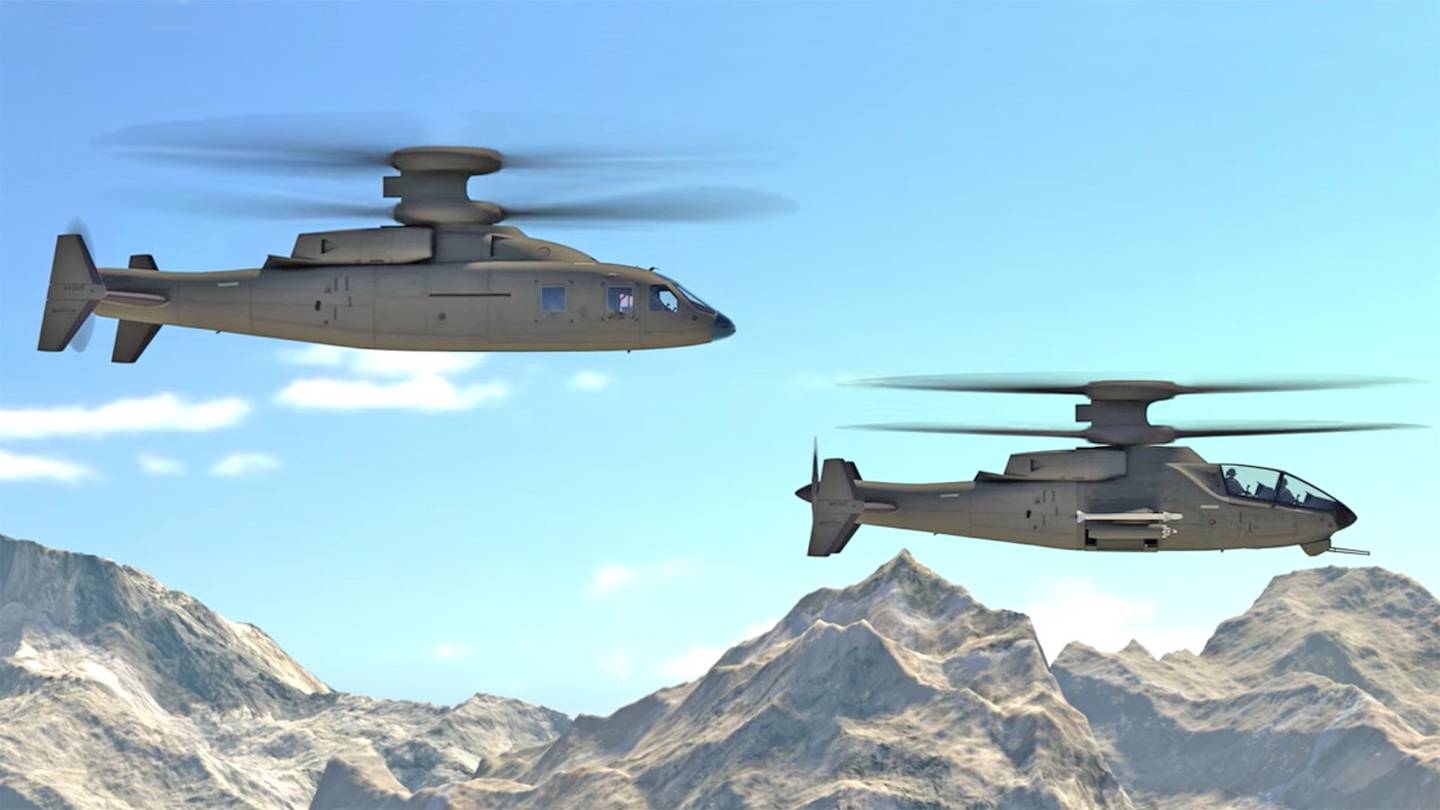New details about the program of the Russian prospective combat helicopter According to the publication of Piotr Butowski and Antony Angrand "Helicopters of Russia", "Le nouvelle helicopter d'attaque russe vise les 400 km / h" in the magazine "Air & Cosmos", JSC "Helicopters of Russia" is working on a new generation of a combat helicopter ordered by the Russian Defense Ministry in August 2017. This was confirmed by the head of the holding Andrey Boginsky during the air show in Dubai. As he said, for today there is a package of the contracts connected to each other on development of the concept of the helicopter and technical requirements to it. In Russia, this stage of development is called research, and it should be completed by the end of 2018.
The next stage, preparation for which is being conducted, will be the topic of a separate contract with the Russian Defense Ministry. In its course, the helicopter concept will be worked out, the creation of the project and testing, that is, the stage of the ROC. According to the schedule of "Russian Helicopters", this stage will take more than four years, and says that mass production may begin around 2023.

The name of the program is the abbreviation of the SBV (high-speed combat helicopter). In Russia it is called the fifth-generation helicopter, although it is difficult to count more than two generations of helicopters in previous versions of Russian combat helicopters.
Each of the KB - Mile and Kamov is working on his project. Kamov uses a coaxial scheme, which is a distinguishing feature of the brand, and the Mil Design Bureau prefers the classical scheme. Common between the two projects are only a large sweep of the horizontal tail, which is designed to unload the main rotor at high speed. Let's notice, that on the available Russian military helicopters small wings serve for a suspension of arms on pylons. Their aerodynamic functions are secondary.
The only known characteristic of a helicopter is its speed, which should exceed 400 km / h. In August 2017, Russian Deputy Defense Minister Yury Borisov reminded that the Ministry of Defense for a long time required from Russian Helicopters to create a new concept of a combat helicopter platform, characterized by an increased cruising speed, at about 400 km / h. Russia's combat helicopters have a top speed of 280 km / h (Mi-28N) and 300 km / h (Ka-52 and Mi-35M).
The prototype LL PSV was created on the basis of the modernized Mi-24 helicopter. He has narrowed the front of the fuselage and there is only one cockpit. It is also equipped with new rotor blades. He made the first flight on December 29, 2015. The machine is tested without horizontal plumage, with it, and also with elongated wings. According to "Helicopters of Russia", in autumn 2016, the LL PSV exceeded the speed of 405 km / h. Initially, the helicopter was developed as part of R & D for a new PSV (a promising high-speed helicopter). The PSV program was stopped in 2014 due to "the inability to achieve a reduction in operating costs compared to the performance achieved." However, the flying laboratory was used for other programs. The new rotor blades, which were tested on the LH PSV, will be used on new helicopters, as well as when upgrading existing types. In the case of the Mi-28 helicopter, the use of new blades increases the maximum speed by 10%, and the cruising speed by 13%.
JSC Klimov, located in St. Petersburg, in charge of the propulsion system, is working on a new turbo-VK-2500M engine. According to the company, the VK-2500M engine is completely new, and not a modification of the VK-2500 series produced now. The takeoff power of the new engine is 2600 hp, in emergency mode - 2,950 hp. That is, the new engine is somewhat more powerful than the VC-2500 (2400 hp at takeoff and 2,700 hp at the emergency). The new modification of M will have 20% less weight and 16% fewer parts. Specific fuel consumption should also be reduced by 7%. Overhaul resource increased. Modular design also allows you to carry out repairs in the field. The VK-2500M engine must be certified in 2023, that is, simultaneously with the SBV helicopter. This engine will also be used in the upgraded versions of the Mi-28N and Ka-52 helicopters.
The SBV will be equipped with a new avionics and new weapon systems, since the existing Russian systems are substantially inferior to Western analogues. In May 2017, the technical director of the helicopter equipment department in the Helicopters of Russia Nikolay Fyodorov made a presentation on the evaluation of avionics, aiming systems and armament of Russian helicopters. He concluded that "electronic equipment produced in Russia for helicopters is not competitive." In the opinion of the Russians, radar-mounted radar systems, helmeted targeting systems and guided missiles are characterized by poor performance. In these areas, their lag is critical. The disadvantage of the radar is the lack of the possibility of indicating the target. In the case of anti-tank missiles, their range of application is very small, and they do not have the ability to "let go and forget". The Russian helmet-based target designation system simply does not exist, since not a single Russian development has reached serial production. In the same vein, Fedorov believes that the Russian radio communication system for combat helicopters also lagged behind for ten years from Western models. The level of system integration and the support of the crew in the decision-making process is assessed as very low. Systems of warning about a collision with the earth are absent.
In other areas, such as an on-board computer, a flight control system and a navigation system, an on-board defense complex, a sight displayed on the windshield indicator, opto-electronic sensors, and unguided missiles, the lag is not so large and can be easily reduced. Only three systems were estimated by Nikolay Fedorov as excellent: the flight control system, the navigation system software and the gun.
A new radar for a new combat helicopter will be able to determine targets for anti-tank missiles. The gyrostabilized optoelectronic survey system (GES) for the SBC will be developed on the basis of "experience gained during the operation of the GES ES-52. ECO-52 was developed by SPC SPC on the basis of the French Strix system of Safran. It is mounted on a gyrostabilized platform and it was equipped with a prototype helicopter Airbus Helicopters Tigre. ECO-52 replaces the heavy and outdated GOES-41 system on Ka-52E helicopters, delivered from Egypt in 2017.
A new light multifunctional guided missile (LMUR), operating on the "put and forget" principle, will be installed with a multi-part GOS. The range of its flight will be from 15 to 18 km, compared with 6-8 km in the existing ATRA "Ataka" and "Whirlwind."
The helicopter will be equipped with a collision warning system with ground, an improved visibility system and a synthetic vision system for pilots. None of these systems is installed on Russian combat helicopters. The new data exchange system will have a speed of 35 Mbit / s compared to 15 Kbit / s at the moment.
This long list shows that the level of innovation of a prospective Russian combat helicopter will be high. In addition to the new engine, transmission and main rotor, Russians need to develop a new avionics and new weapons. The scope of the tasks posed suggests that serial production in five years is unlikely, despite the statements made. Or the helicopter bulet is equipped with transitional systems.
https://bmpd.livejournal.com/2987129.html




 PapaDragon
PapaDragon




